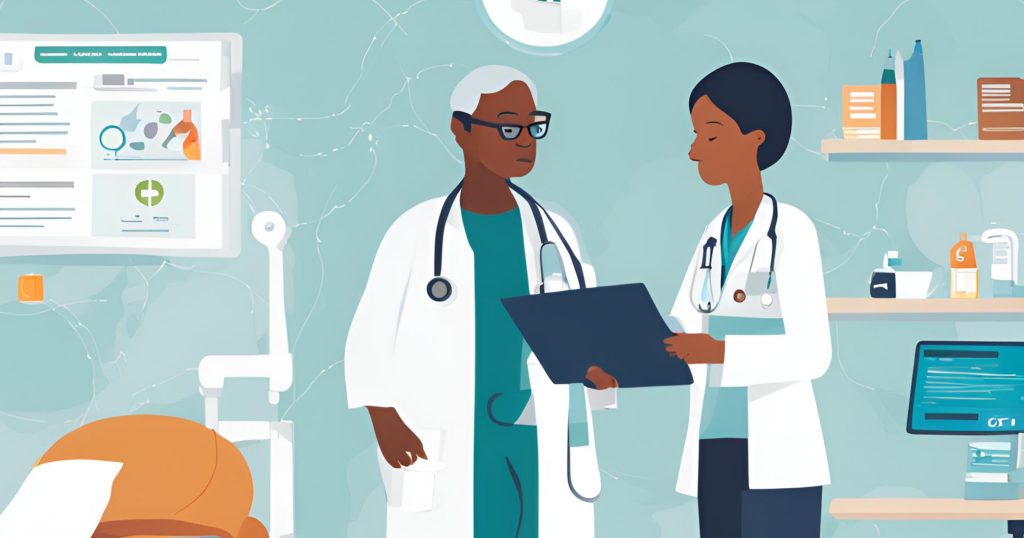
In today’s world, where data-driven solutions are revolutionizing industries, healthcare stands to gain immensely from the insights derived from medical billing data. One area where this data can make a significant impact is in identifying and addressing healthcare disparities.
Understanding Healthcare Disparities
Certainly! Here’s the revised sentence with transition words:
“Healthcare disparities refer to differences in healthcare access, quality, and outcomes among various population groups. Therefore, addressing these disparities is crucial for achieving equitable healthcare for all individuals.”
The Power of Medical Billing Data
Medical billing data holds immense power in several aspects of the healthcare industry. Here’s a breakdown of its significance:
Financial Insights:
Medical billing data provides crucial insights into the financial aspects of healthcare organizations. Additionally, it includes information about services rendered, costs, reimbursements, and payments. By analyzing this data, hospitals, clinics, and insurance companies can understand their revenue streams, identify billing errors, and optimize reimbursement processes.
Patient Care Optimization:
By analyzing medical billing data, healthcare providers can identify patterns in patient diagnoses, treatments, and outcomes. Consequently, this information can be used to improve the quality of care by identifying best practices, predicting patient needs, and developing personalized treatment plans.”
Fraud Detection and Prevention:
Medical billing data is instrumental in detecting fraudulent activities within the healthcare system. By analyzing billing patterns and anomalies, healthcare organizations and insurance companies can identify instances of overbilling, upcoding, and other fraudulent practices, thus safeguarding resources and ensuring fair billing practices.
Healthcare Policy and Regulation:
Policymakers and regulatory agencies use medical billing data to monitor healthcare trends, assess the effectiveness of healthcare policies, and inform regulatory decisions. For example, data on healthcare utilization and costs can influence decisions regarding insurance coverage, reimbursement rates, and healthcare delivery models.
Population Health Management:
Certainly! medical billing data contributes to population health management efforts by providing insights into the health needs and outcomes of specific patient populations. Through analyzing demographic information, diagnosis codes, and treatment patterns, healthcare organizations can identify high-risk populations, implement preventive interventions, and allocate resources more effectively.”
Identifying Disparities

Using medical billing data to identify and address healthcare disparities can be a powerful tool, but it also comes with its own set of challenges and limitations. Here’s how it can be both beneficial and problematic:
Benefits:
Quantitative Analysis:
Medical billing data provides a vast amount of quantitative information about healthcare utilization, procedures, diagnoses, and costs. Analyzing this data can help identify patterns of disparities across various demographic groups, such as race, ethnicity, gender, socioeconomic status, and geographic location.
Targeted Interventions:
By identifying disparities through medical billing data, healthcare providers and policymakers can develop targeted interventions to address the root causes of these disparities. For example, if the data shows that a particular demographic group is less likely to receive preventive care, interventions can be designed to increase access to such services for that group.
Monitoring Progress:
“Moreover, regular analysis of medical billing data allows for ongoing monitoring of efforts to reduce healthcare disparities. By tracking changes over time, stakeholders can assess the effectiveness of interventions and make adjustments as needed.”
Challenges:
Incomplete Data:
Medical billing data may not capture all aspects of an individual’s health status or healthcare experience. For example, it may not include information on social determinants of health, such as housing stability, access to healthy food, or transportation barriers, which can significantly impact health outcomes.
Bias in Coding:
There may be biases in how healthcare providers code diagnoses and procedures, which can lead to inaccuracies in the data and mask disparities. For example, certain demographic groups may be more likely to receive certain diagnoses or treatments due to implicit biases or systemic inequities in the healthcare system.
Privacy Concerns:
Medical billing data contains sensitive information about patients’ health conditions and treatments, raising privacy concerns. Safeguards must be in place to protect patient privacy and comply with regulations such as the Health Insurance Portability and Accountability Act (HIPAA).
Access and Availability:
Access to medical billing data may be limited, particularly for researchers and policymakers who do not have partnerships with healthcare organizations or access to large databases. This can hinder efforts to conduct comprehensive analyses of healthcare disparities.
Addressing Disparities

Using medical billing data to identify and address healthcare disparities can be a powerful tool in the effort to create more equitable healthcare systems.
Identification of Disparities:
By analyzing medical billing data, researchers and policymakers can identify disparities in healthcare utilization, such as differences in the rates of preventive care, chronic disease management, and access to specialty care among different demographic groups.
Root Cause Analysis:
Medical billing data can help in understanding the root causes of healthcare disparities. For example, disparities in access to care may be linked to factors such as insurance coverage, transportation barriers, language barriers, or availability of healthcare providers in certain areas.
Targeted Interventions:
Once disparities are identified, targeted interventions can be developed to address them. For example, if disparities in access to care are found to be related to transportation barriers, interventions such as providing transportation services or telemedicine options can be implemented to improve access for underserved communities.
Monitoring Progress:
“Furthermore, medical billing data can be used to monitor the effectiveness of interventions aimed at reducing healthcare disparities over time. By tracking changes in healthcare utilization and outcomes among different demographic groups, policymakers and healthcare providers can assess whether interventions are having the desired impact.”
Policy Development:
Findings from medical billing data analysis can inform the development of policies aimed at reducing healthcare disparities. For example, policymakers may use data on disparities in preventive care utilization to advocate for policies that improve access to preventive services for underserved communities.
Community Engagement:
“Involving communities in the interpretation of medical billing data and the development of interventions can help ensure that interventions are culturally appropriate and address the specific needs of the communities they serve. Moreover, this approach fosters greater community engagement and ownership of healthcare solutions.”
Conclusion:
In conclusion, the utilization of medical billing data presents a compelling opportunity to address healthcare disparities and foster more equitable healthcare systems. “By harnessing the power of this data, stakeholders can gain insights into patterns of healthcare utilization, treatment outcomes, and access across diverse demographic groups. Subsequently, this knowledge allows for targeted interventions aimed at addressing the root causes of disparities and improving healthcare delivery for all individuals.”.
Recent Comments